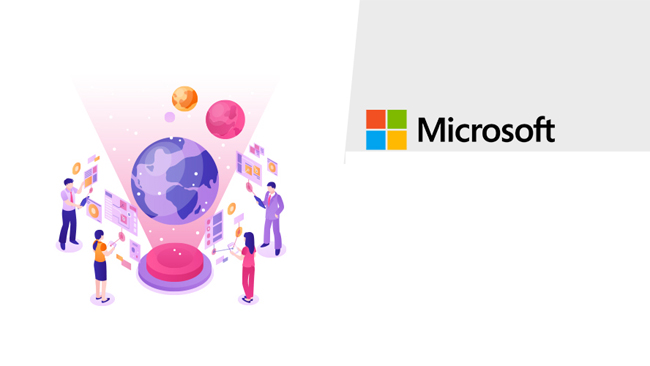
New Delhi, May 17, 2022.
Microsoft’s Future Ready Industry week, ITES edition brought
together industry luminaries from across India’s dynamic ITES sector to share perspectives
driving India’s digital transformation in the sector. Industry leaders from
leading organizations like Tech Mahindra, Wipro, Infosys, TCS, Genpact and EY amongst others shared valuable
insights on how the ITES sector can deliver the right digital outcomes and
innovation for customers, enhance employee productivity, foster a culture of
collaboration, and enable new revenue streams via data driven business models.
The ITES sector has been at the forefront of digital
transformation and enterprises will continue to focus on deploying innovative
technologies to further strengthen operational efficiencies for their business.
The three priorities that will lead to acceleration for the IT service
providers will be centered around prioritizing customer experience by
digitizing the core and redesigning product portfolios. These will be focused
on-Reskilling and reorienting the workforces to
optimize remote work capabilities and to take full advantage of technologies
like artificial Intelligence; Leading the charge to create a sustainable future
and accelerating the consulting services model. As service providers get ready
to drive digital transformation in their customer enterprises, solutions around
experience and collaboration takes center stage. This coupled with the ability to leverage data to drive
AI driven insights will be paramount in providing customer centric solutions.
CP
Gurnani, Chief Executive Officer & Managing Director, Tech Mahindrain
a fireside chat withAnant Maheswari, President Microsoft India spoke
about how Tech Mahindra is leveraging technology across various domains. Talking
about how technology has empowered employees and customers, he said, "The
pandemic increased the rate of technology adoption since we had to go virtual.
Microsoft Teams made a huge difference during this timeframe since they were
able to bring various pieces of technology into product development.
Microsoft's rate of change has kept pace with the demands of the Indian IT
industry and consumers globally. The Indian IT industry has grown by
13%-14% and the consumption of technology has nearly grown by 7%-8%.Sharing
his perspective on how India can become a digital powerhouse, he further added,
“As a business, you need to anticipate the technology evolution and ways to
improve the process. The question is whether we will be ready to stop using the
word digital transformation and make business transformation the norm because
digital gets buried when everything starts becoming a standard. The easiest way
to do it is to evolve faster into business transformation, SaaS, Metaverse, or employee
experience management.”
Sharing his views on the opportunities
created by the accelerated adoption of digital technologies, during the session
"Digital
transformation & innovation for growth opportunities in IT/ITeS, Sanjeev Singh, Chief Operations Officer Wipro said,
“Cloud is the biggest opportunity and has the biggest momentum where it
has evolved from an infrastructure or service solution to become a platform as
a service or software as a service. The flexibility it provides around
scalability, security, speed to market, is immense and Azure plays a
significant role in this space. Every company that has successfully been able
to SaSsifyor PaaSifyits services or products have forged ahead at a much faster
pace.”
The “Future
of IT services” session featured Nitin Bhatt, Technology Sector leader at EY
who shared his perspective on the roadmap and growth drivers for the
sector. Commenting on the transformation taking place across processes and
systems to ensure a connected enterprise ecosystem experience, Nitin said, “Cloud is the key in terms of the need to adopt
modern architectures to enable a cloud first and mobile first enterprise IT
strategy. Cognitive services can be leveraged across the enterprise with companies
finding interesting use cases, for instance around employee experience. In the
case of revenue acceleration, digital has helped modernize inside sales,
provided better strategies for pursuit enablement as well as a unified customer
view while enabling the convergence of customer insights, which helps the sales
team.”
Participating in a session titled "The
future of work: Next gen hybrid workspaces" Richard Lobo, Executive
Vice President, HR, Infosys and Gianni Giacomelli, Chief Innovation Officer,
Genpact shared their perspectives on fostering a thriving work culture. Richard said,
“For the first time since we got into the cubicle styled
workspaces, we have had the opportunity to reinvent and relook at how we work. We need to see how people can deliverthe best
no matter where they are or what they use in terms of space or technology.” Gianniadded “We need to
reimagine and move away from the organizational design practices that we have
been using for the last 50 years. We need to identify the right resources,
which is about equipping people with their skills and putting them in the right
place. We need to provide them with knowledge in the form of knowledge
management and enable them through SharePoint work or Viva topics. We want
people to collaborate, and it can be further supplemented with incentives,
technology, norms, trust, and culture.”
Commenting on developments related to the session “Talent
Transformation in the Digital World,” Janardhan Santhanam, Global Head -
Talent Development, TCSsaid, “The TCS model of secure borderless
workspace has spurred the ability to reach out to a much larger segment of
people virtually and connect them to build networks without worrying about
everyone being at the same place. On the learning front, we have been able to
bring in substitutes for a lot of the in-person interactions that we used to do.
Now with an AI tool, we can have 10,000 people practice power articulation
using video-based AI. The pandemic and the secure borderless workspace model
have thus helped the industry and us move from just doing physical or virtual
or phygital to optimizing the blend of physical and virtual in a very
contextual way based on what purpose we want to solve.”